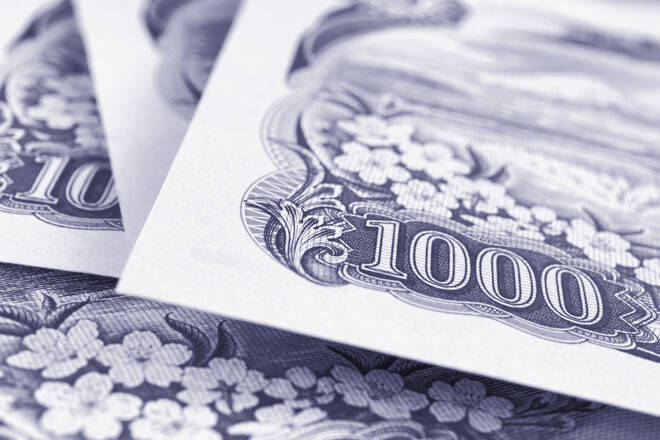Advertisement
Advertisement
USD/JPY Fundamental Daily Forecast – BOJ Intervention Not Enough to Overcome Hawkish Fed Policy
By:
The intervention was a doomed step with the Dollar/Yen likely to resume its rally since the market forces are being driven by hawkish Fed policy.
In this article:
The Dollar/Yen finished higher on Friday after posting a volatile reversal to the downside the previous session after Japanese authorities intervened in the markets to support the currency for the first time since 1998.
Some traders attributed the lack of follow-through to the downside due a bank holiday in Japan. Others said the move took place because most investors believe the intervention would not have a lasting impact on the Japanese Yen.
On Friday, the USD/JPY settled at 143.365, up 1.073 or +0.75%. The Invesco CurrencyShares Japanese Yen Trust ETF (FXY) closed at $65.20, down $0.47 or -0.72%.
The USD/JPY tanked more than 2% the previous session after it had traded more than 1% higher on the BOJ’s decision to stick to its super-loose policy stance, bucking a global tide of monetary tightening by central banks fighting soaring inflation.
“We have taken decisive action,” vice finance minister for international affairs Masato Kanda told reporters, responding in the affirmative when asked if that meant intervention.
Intervention Impact Won’t Last
The intervention wasn’t a total surprise. The week earlier the Bank of Japan (BOJ) completed a rate check, which is usually a precursor of an intervention. The timing and the reason for the intervention – to strengthen the Yen – was a surprise, however.
Usually, interventions are reserved for currency manipulation that could be detrimental to a country’s economy. In this case, the rise in the USD/JPY may be hurting Japan’s economy, but the currency is not being manipulated.
The Yen is being crushed because of the divergence in policy between the U.S. Federal Reserve and the Bank of Japan. The Fed is aggressively hiking interest rates in an effort to drive down inflation. The BOJ is holding policy at ultra-low levels.
With the Fed raising rates and the BOJ holding on to negative rates, the spread between U.S. Treasurys and Japanese Government bond yields is widening, making the dollar a more attractive currency.
That’s it in a nutshell.
US Treasury Acknowledges BOJ’s Intervention
According to reports, the U.S. Treasury acknowledged the BOJ’s move but stopped short of endorsing the intervention.
Two months ago U.S. Treasury Secretary Janet Yellen said of the Yen’s depreciation that Washington remained convinced that currency intervention was warranted only in “rare and exceptional circumstances”, and that the market should determine exchange rates for G7 countries.
Short-Term Outlook
Prior to the intervention, bullish traders were being tentative about adding to their long positions as the USD/JPY approached 145. Now that the intervention is out of the way and with analysts saying Japanese officials are not likely to try to drive the Yen higher over the near-term, buyers are likely to get more confident and resume the uptrend.
The intervention was the most powerful tool the BOJ had available and they used it. It was essentially a weapon of last resort that Japan had left to arrest sharply Yen declines that were pushing up import costs and threatening to hurt consumption.
In our opinion, the intervention was a doomed step with the Dollar/Yen likely to resume its rally since the market forces are being driven by hawkish Fed policy. Our opinion won’t change until the Fed gives the all-clear signal or until the Bank of Japan turns hawkish.
For a look at all of today’s economic events, check out our economic calendar.
About the Author
James Hyerczykauthor
James is a Florida-based technical analyst, market researcher, educator and trader with 35+ years of experience. He is an expert in the area of patterns, price and time analysis as it applies to futures, Forex, and stocks.
Latest news and analysis
Advertisement
